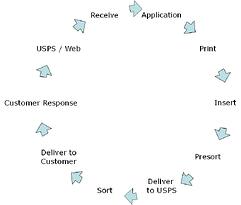 A common mistake made by operations is attempting to make improvements without a detailed understanding of existing process. This is especially critical with document management. It's important to understand the complete lifecycle of a document, not just the production process.
A common mistake made by operations is attempting to make improvements without a detailed understanding of existing process. This is especially critical with document management. It's important to understand the complete lifecycle of a document, not just the production process.When mapping out the process, walk through each step, interviewing programmers, operators and users. Don't take any part of the process for granted. Many times what you think should be happening actually isn't. And steps you’ve never considered are important.
The most important question to ask during these interviews is "Why?" Note the reasons for conducting each step. Then highlight any actions that are done "because that's how we've always done it." A good follow-up to "Why?" is "What if that step failed or was eliminated?"
It's important during this stage of the review to refrain from suggesting or implementing improvements. The business reason for actions taken at one point on the process may not become obvious until later on. For example, an operator may not know the reason for completing what appears to be a redundant log. This looks like a potential step to eliminate. However, during subsequent interviews, you may discover that the log feeds directly into a chargeback system.
When the documentation is completed, hold a review session with representatives from every group in the same room. Walk through the entire process, step-by-step, and validate what you've documented. Use flowcharts to illustrate the complete lifecycle, allowing participants to correct any errors or misconceptions.
Also during this phase, you need to establish the metrics for verifying the success of any process improvements. Select the factors you want to impact and determine how to measure them. In the document world, the two most common are pages/pieces per minute and cost per piece.
With cost per piece, be as accurate as possible. The costs of document production are more than paper, toner and maintenance charges. You need to include operators, quality control staff and management. Both digital and paper documents require programming and ongoing IT support. All components of document creation should be measured and reported.
You should also look at the other operations impacted by the documents being produced. For example, when reviewing statements, include the remittance processing and customer service departments. Perhaps the changes being implemented can improve how quickly customers pay bills or reduce the number of customer service calls. The complete lifecycle needs to be examined.
Now that you've documented the existing process, you can begin the work of identifying and introducing improvements.
